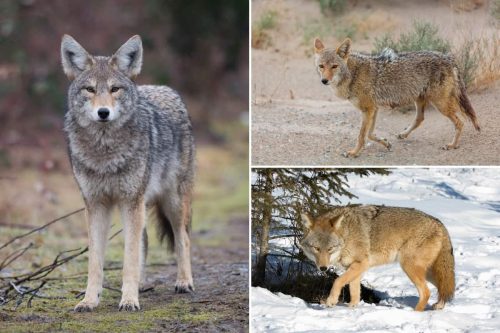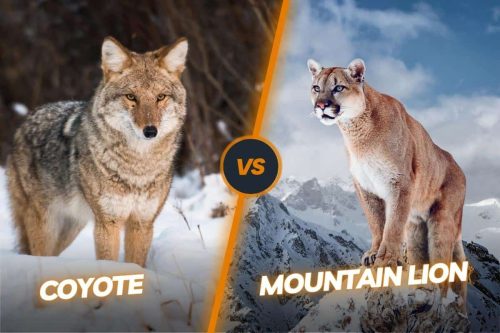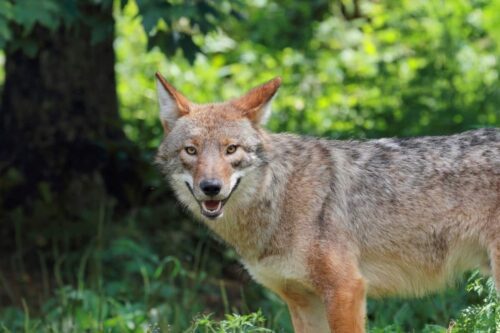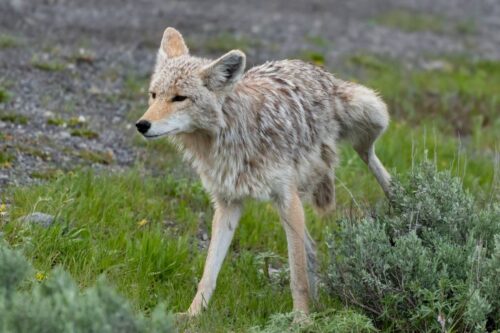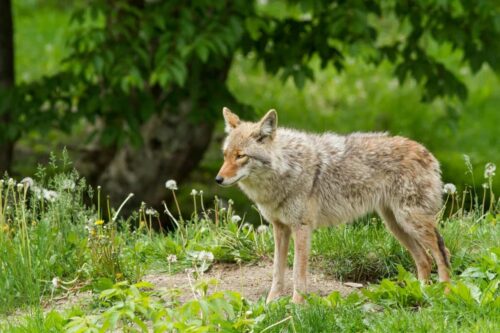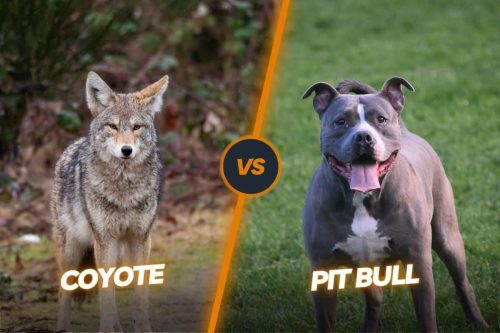Coyotes in Connecticut: History, Population, Behavior & Hunting
Like all the other states of the USA, coyotes are also quite common in the Connecticut state. Coyotes have quite a stable population in Connecticut and you can easily find them in the places like forests, farm fields, highways, mountains, etc. Nowadays, these wild dogs are also thriving in rural, urban, and suburban areas. Several attempts were made to eliminate these wild species from the state but all in vain as coyotes are continuously increasing in numbers and range. In this article, we are going to discuss in detail the presence of coyotes in Connecticut and how they are residing alongside human beings in the state.
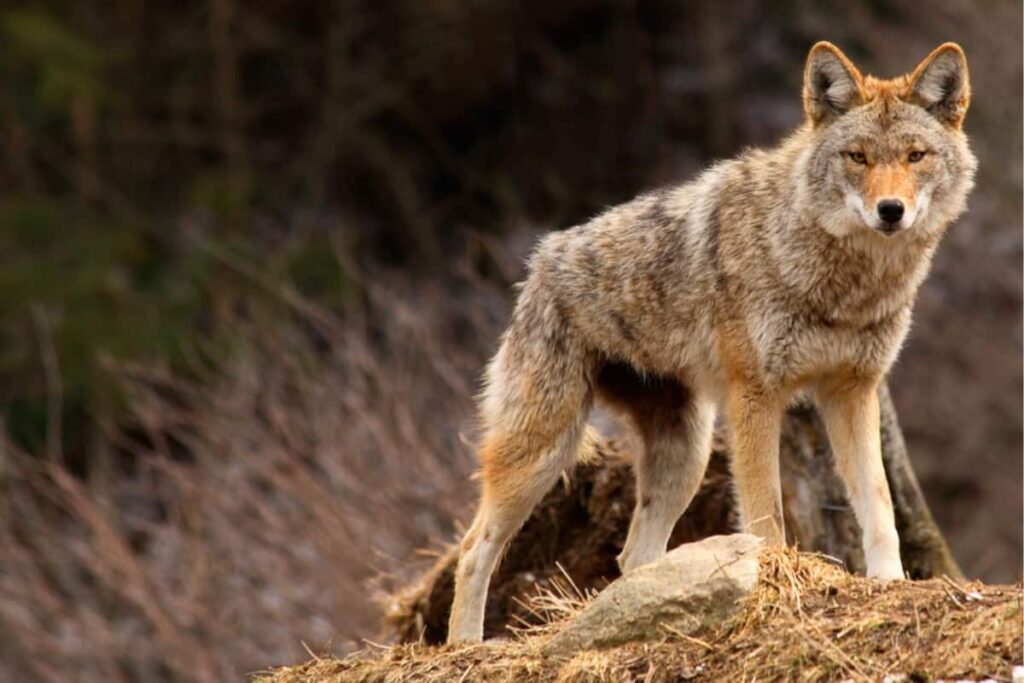
Contents
Are there coyotes in Connecticut?
Yes, there are a lot of coyotes in Connecticut and the population of coyotes in Connecticut is continuously growing it was estimated almost 5000 coyotes are residing in the state. Coyotes are frequently witnessed in densely populated towns like Norwich. But they mainly exist in hikes, forests, and beaches. Other than coyotes, wild animals like foxes, grey foxes, and red fox are also exist well in numbers in the state.
Read the fox vs coyote comparison here.
History of the Coyotes in Connecticut
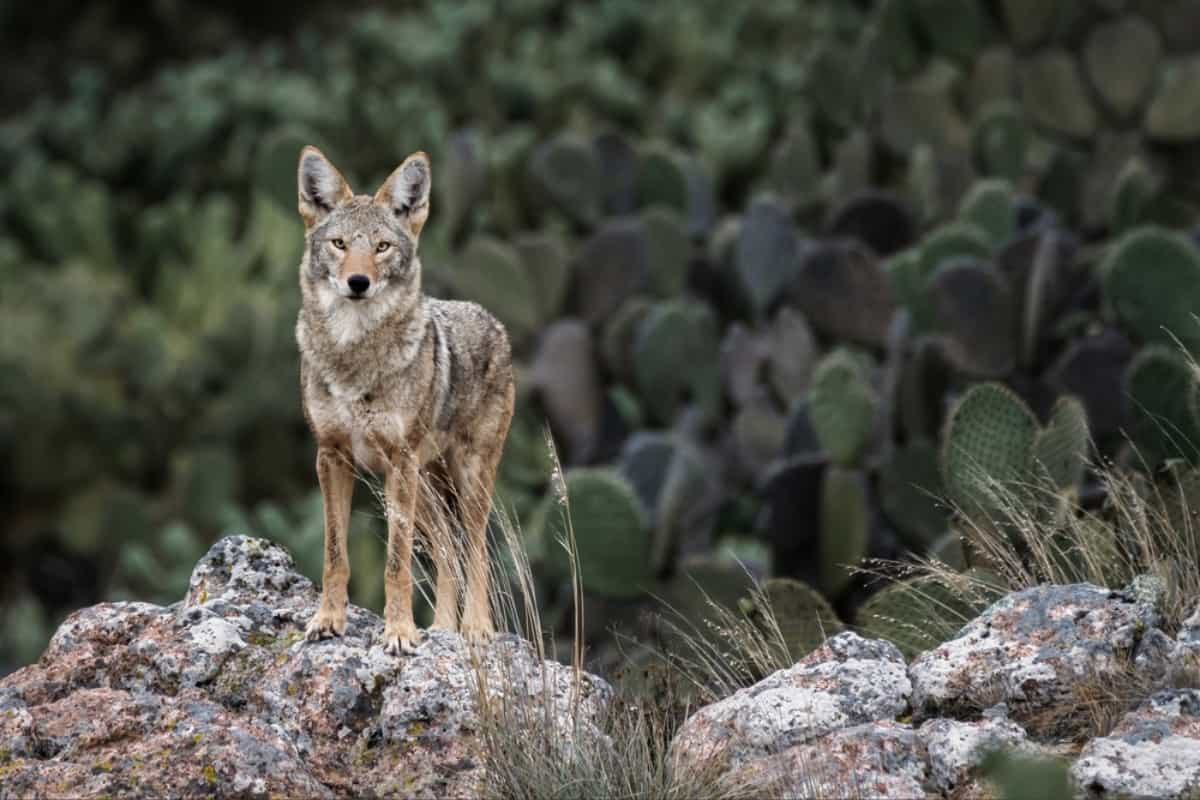
Coyotes are not the native animals of the state. They have actually migrated from the western side of the United States. Some of them also shifted from Canada into the Atlantic states. First of all, these wild dogs were reported in the state in the 1950s. They concentrated themselves in the Northwestern side of Connecticut and gradually expanded their range into every nook and corner of the state. Coyotes are adaptable enough that they can easily live among the human-disturbed areas and that’s why they are easily thriving in the highly populated areas of the state.
Also, read: Are there coyotes in New Jersey?
Habitat for the Coyote in Connecticut
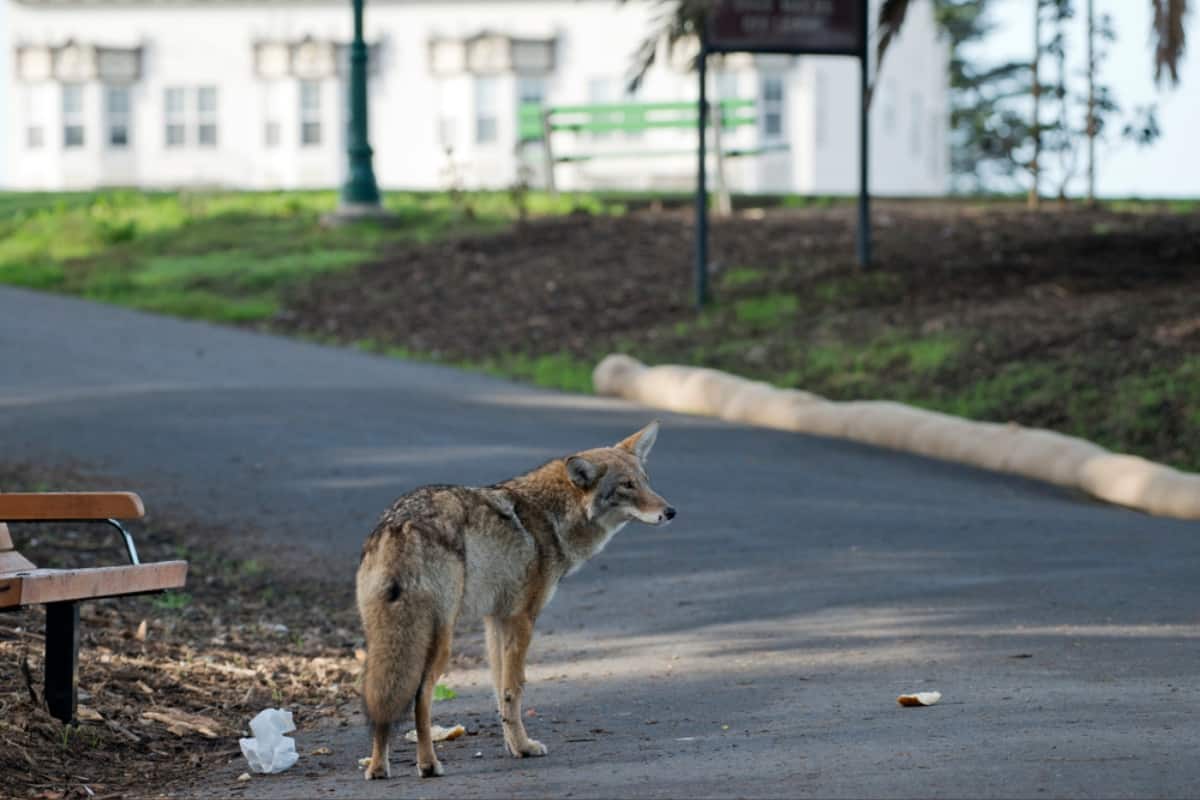
Coyotes are highly adaptable and can thrive in a variety of habitats, including rural, suburban, and urban areas. Their presence in Connecticut is not limited to any specific habitat, and they can be found in a wide range of environments. In Connecticut, coyotes can be found in woodlands where they can find cover, den sites, and prey fields, and grasslands, where they may hunt small mammals and birds, urban and suburban areas where they can find food sources like rodents and small mammals and may even scavenge from garbage bins in residential areas, and some coastal regions of Connecticut can also support coyote populations.
Diet of the Coyotes in CT
The diet of coyotes in Connecticut is similar to their diet in other regions where they are found. Coyotes are opportunistic and highly adaptable predators, which means their diet can vary depending on the available food sources in their habitat. In Connecticut, the primary components of a coyote’s diet may include birds, insects, small mammals, carrion, fruits, vegetables, pet food, and human waste.
Coyote Confrontations in Connecticut
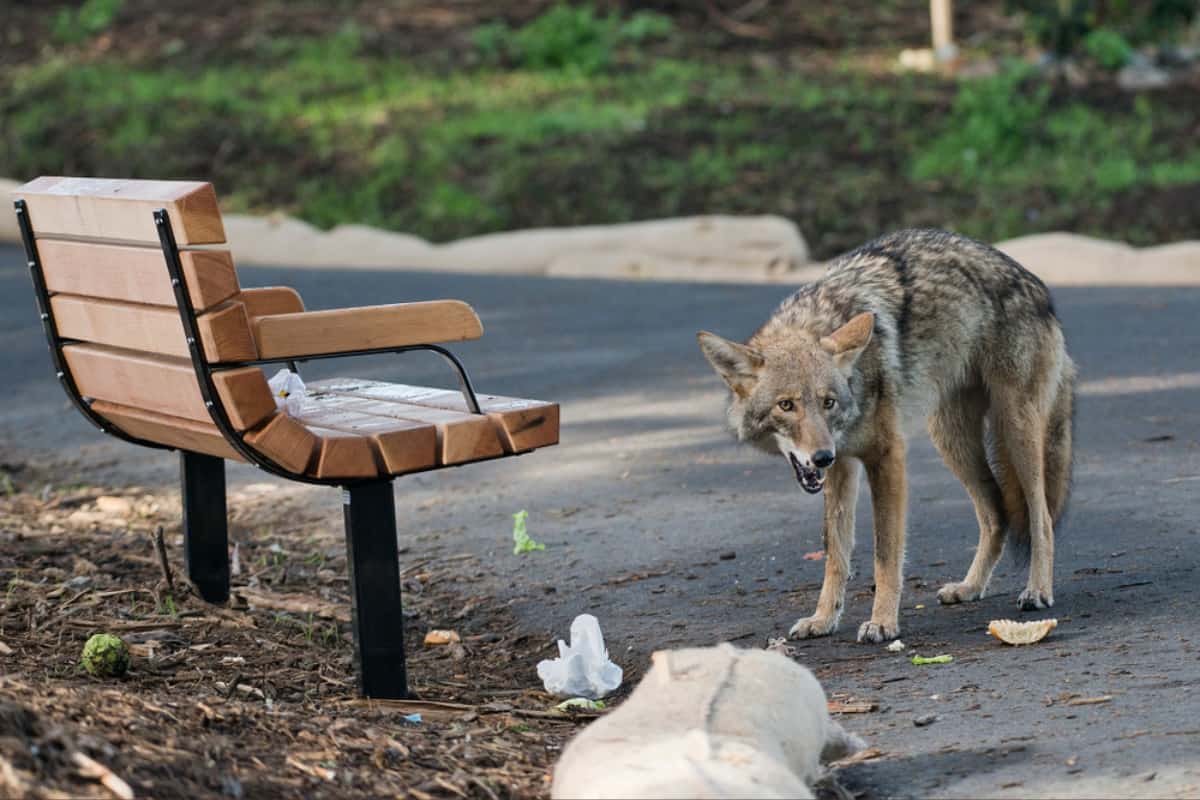
Coyote confrontations are on the rise in many areas of Connecticut. These wild dogs are attacking human beings, pet animals, property, etc. Being omnivores animals, coyotes can eat everything like garbage, pet food, fruits, human left foods, etc. In 2022, once a coyote was reported while snatching food from the hand of a person in Norwalk. In Glastonbury, they jumped the fence to target two pet dogs in the backyard. Fortunately, the dogs were not hurt and timely saved.
They rarely attack adult human beings but they can target defenseless children. Once coyotes attacked the leg of two years old girl and tried to drag her away but the father of the girl was nearby and he immediately intervened. Coyotes are also acting more aggressively because they are no more fearful of human beings living close to them and people also occasionally feed them different things.
Eastern coyotes in Connecticut are also slightly bigger in size as compared to their Western counterparts. In Connecticut, people are getting more and more frightened and intolerant towards coyotes due to their excessively aggressive behavior.
How to co-exist with the coyotes in Connecticut?
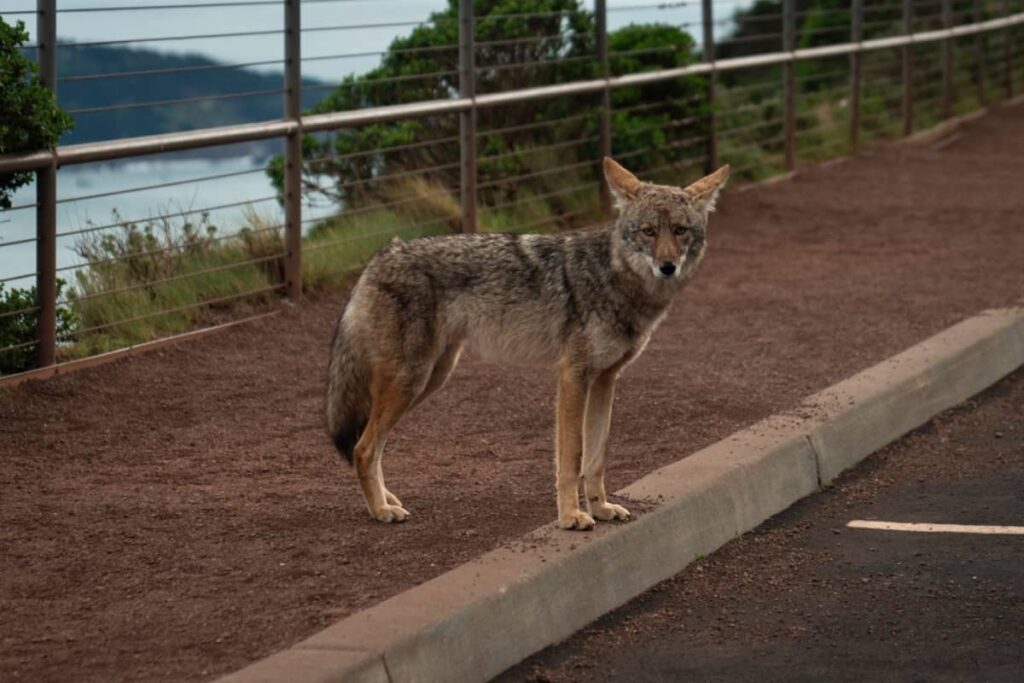
Coexisting with coyotes in Connecticut, or any other area where they are present, is possible with some simple practices and precautions. Coyotes are naturally wary of humans and usually avoid direct contact. By following these guidelines, you can minimize potential conflicts and promote peaceful coexistence:
- Learn about coyote behavior, their habits, and the steps you can take to coexist with them safely. Understanding their natural instincts will help you make informed decisions.
- Coyotes are attracted to food, including garbage and pet food left outdoors. Use secure trash cans and do not leave pet food outside, especially overnight.
- Coyotes may perceive small pets as prey. Always keep your pets on a leash when outside, especially during dawn and dusk when coyotes are more active. Avoid leaving them unattended in areas where coyotes are known to roam.
- If you have livestock, use fencing and other protective measures to keep them safe from potential coyote predation.
- If you encounter a coyote in your yard or nearby, try using loud noises, shouting, or banging pots and pans to scare them away. This reinforces their natural fear of humans.
- Feeding coyotes can lead to habituation and loss of their natural fear of humans. Never intentionally feed them or leave out food for them.
- Illuminating your property with motion-activated lights can discourage nocturnal visits from coyotes.
- Seal off or block access to potential den sites, such as crawl spaces and under porches.
- If children are playing outside, ensure they are supervised, especially in areas where coyote sightings have been reported.
- Work with your neighbors and community to spread awareness about coyote behavior and how to coexist peacefully with wildlife.
- Maintain a safe distance if you encounter a coyote and do not attempt to approach or corner them.
- If you observe aggressive or unusual behavior from a coyote, such as stalking or attacking pets, report it to your local wildlife authorities or animal control.
Remember that coyotes are an essential part of the ecosystem, helping control rodent populations and contributing to overall biodiversity. Responsible coexistence is key to maintaining the balance between wildlife and human communities. For specific guidance and information about coyotes in your area, contact the Connecticut Department of Energy and Environmental Protection (DEEP) or local wildlife authorities.
Also, read: Are there coyotes in Maine?
Rules for Hunting Coyotes in Connecticut
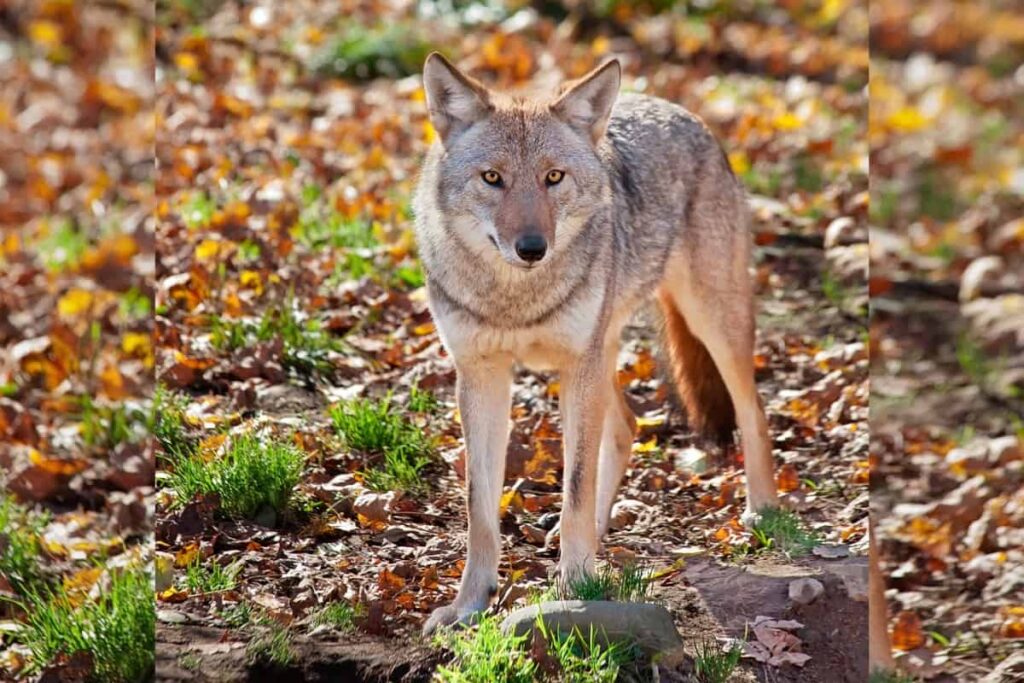
Let’s have a look at some general guidelines for hunting coyotes in Connecticut. Keep in mind that regulations are continuously updated and so you must be updated about these guidelines before engaging in hunting activities.
Hunting License
To hunt coyotes in Connecticut, you generally need a valid hunting license issued by the Connecticut Department of Energy and Environmental Protection. Different types of licenses may be available, such as resident, non-resident, and youth licenses. Make sure to obtain the appropriate license based on your residency status and age.
Season/bag limit
There is no seasonal or bag limit for hunting coyotes in the state. You can hunt coyotes throughout the year. There is a certain time at which it is most suitable to hunt the coyote. These are called legal hunting hours. These hours are 0.5 hours before sunrise and 0.5 hours after sunset. You must also report how may coyotes you have hunted down and these coyotes must be pelt tagged for selling purposes.
Weapons of hunting
Ensure that you use the appropriate hunting firearm or archery equipment as specified by the state regulations. Also, use legal ammunition for hunting coyotes. Electronic calling devices could be deployed for this purpose.
Permits and Tags
In some cases, special permits or tags may be required for hunting coyotes, especially if you are participating in controlled hunts or events.
Public and Private Land
Understand the rules regarding hunting on public versus private land. Obtain permission from landowners if you plan to hunt on private property.
Bait for trapping purposes
You may also pile up the bait to attract coyotes toward you for hunting purposes. In this regard, the coyote bait pile is a good option you can avail to lure in the coyotes towards you. It could provide you plenty of time to hunt down the coyote.
Sunday hunting
It is generally illegal to hunt coyotes on Sunday. It is only allowed in limited areas but you need to take permission before engaging in this activity.
Remember that hunting regulations are in place to manage wildlife populations, promote conservation, and ensure the safety of hunters and the public. As such, it’s crucial to stay informed about the current rules and follow them carefully. For the most up-to-date information on hunting coyotes in Connecticut, visit the Connecticut DEEP website or contact your local wildlife office.
Frequently asked questions
Conclusion
Coyotes have become an established part of Connecticut’s wildlife landscape, adapting to various habitats and coexisting with human communities. As highly adaptable and intelligent predators, they play a crucial role in controlling rodent populations and contributing to ecosystem balance. While some concerns and occasional conflicts may arise due to their presence, it is essential to approach the issue with understanding and responsible coexistence practices. Educating ourselves and our communities about coyote behaviour can help dispel misconceptions and foster a greater appreciation for these fascinating creatures.

Izzy is an experienced ranch worker who has a passion for exploring nature and getting up close to wildlife. With her connections to various animal organizations, Izzy is well-versed in animal care and rehabilitation.

